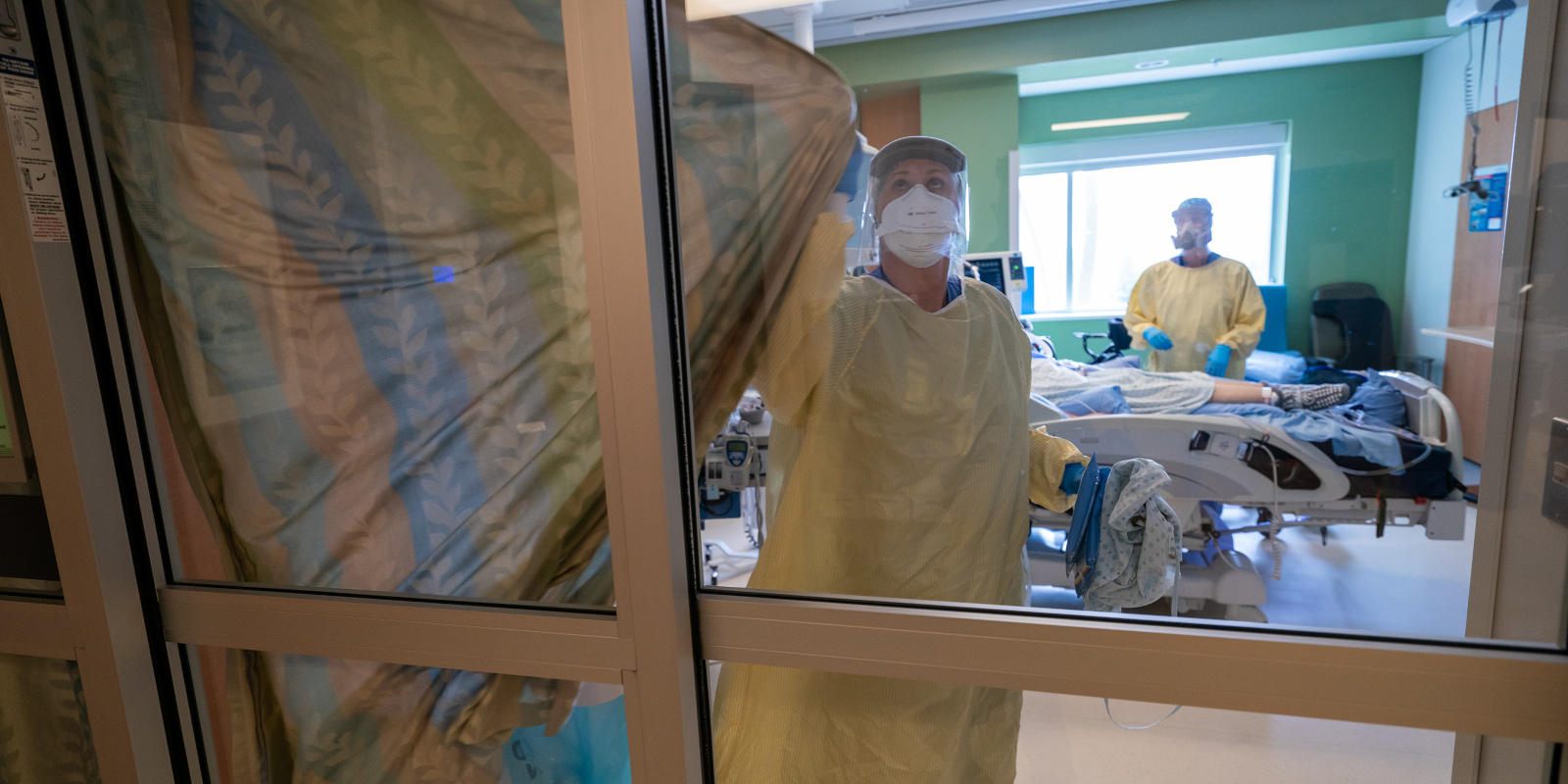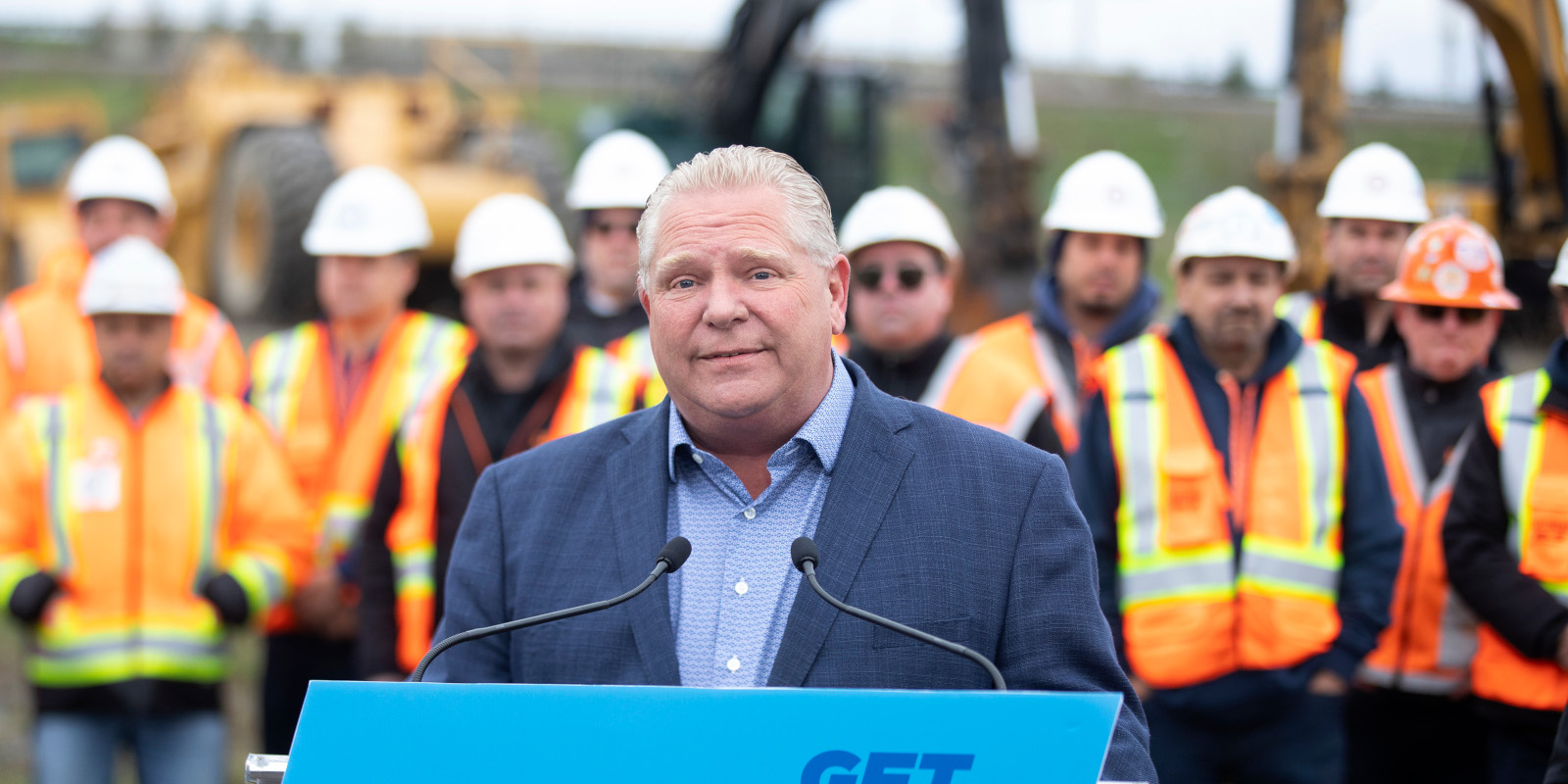Canada’s health-care system is under siege. The country is still grappling with an acute crisis in our hospitals stemming from the COVID-19 pandemic while the slow-moving quagmire caused by the country’s aging population threatens to become a larger disaster. Can our system handle it? This five-part Hub series produced in association with the National Post looks deep into the world of Canadian health care, not just to identify problems, but to offer solutions for the future.

Talk to provincial premiers and they’ll likely tell you that fixing Canada’s health-care system is easy: It just takes cash, about $28 billion, more or less. That initial lump sum would bring the federal government’s contribution up to a level that the provinces have agreed will get things to where they need to be. Then, more increases after that.
The federal government says it can’t afford it. After bursting its budget during the pandemic, including billions flowing to the provinces, federal Health Minister Jean-Yves Duclos has implied that the premiers want blood from a stone.
It’s the usual federal-provincial donnybrook over money, but with an urgent new backdrop: a health-care system that appears to be in meltdown. Badly understaffed emergency rooms are shuttering across the country, wait times are spinning out of control and the president of the Canadian Medical Association is warning of system “collapse.”
How the provinces solve this problem, if they solve it, could set the course for Canadian health care for decades to come.
One problem is that Canada already spends a lot on health care relative to similar countries, even if the federal government’s sudden claims of fiscal restraint seem hard to believe. And increased health-care spending would have to be funded by more taxes. But the existing Canadian tax burden also ranks high, relative to its peers.
Canada hovers around 11th in the world in health-care expenditure per capita, with provincial per capita spending in 2019 ranging from about $4,600 to $6,400 (the territories, which face unique geographic and demographic challenges, are outliers). Around 70 percent of this is public spending, which is low compared to OECD peers like Sweden, France, and Germany, with the remainder coming from employer-based insurance programs, out-of-pocket spending, and other private sources. Yet, in 2021, the Commonwealth Fund ranked Canada 10th out of 11 Western countries in quality of care, behind only the U.S.

The most commonly proposed alternative to more spending is allowing the provinces to increase private delivery of health care—often seen as politically radioactive as tax hikes. In the 2021 election, then-Conservative leader Erin O’Toole was forced to defend himself against Liberal accusations that he was in favour of “two tier health care” after he said he might be inclined to let the provinces experiment more with private delivery.
It is a perpetual argument over two unpopular ideas, but the pandemic has pushed Canada’s health-care system to the brink, and usually risk-averse politicians may be open to ideas that, in normal times, get laughed out of focus groups.
A Shrinking Pie
While Canada’s health expenditure has creeped upwards, its average annual growth rate— 1.4 percent per capita between 2014 and 2019—has been slow. Yet, health spending as a proportion of provincial budgets keeps growing, approaching 40 percent, as tax revenue at all levels of government has fallen from 34.7 percent of the GDP in 2000 (above the OECD average of 34.3 percent) to 33 percent in 2019, a reduction of almost $50 billion in revenue.
“Health-care spending isn’t suddenly ballooning, but government budgets are getting relatively smaller,” said Danyaal Raza, a family physician and University of Toronto professor who is an outspoken advocate for medicare. “Health care has been relatively insulated from public spending reduction,” he said.
While health-care spending enjoys untouchable status, provinces continue to rack up massive debt, and provincial budgets are feeling the squeeze. Alberta has cut post-secondary education. Ontario has cut education, firefighting, and transit. Manitoba has also cut education. But even the most cash-strapped provinces have been loath to cut health care, and nearly as loath to increase sales or other taxes to raise revenues.

“Ottawa normally has the ability to take in more money than it needs, but provinces have a much harder time of it,” said Katherine Fierlbeck, a Dalhousie University political scientist who specializes in the politics of health care. The Trudeau government has promised to pony up $45.2 billion in Canada Health Transfers to the provinces this year, which is an increase of nearly five percent over last year. And Canadians become used to a certain level of services. “So if Ottawa decides to turn the taps off the provinces are left holding the bag, and their choices are pretty darn tough,” Fierlbeck said.
Canadians’ view of what constitutes “health care” has also expanded beyond the domain of doctors’ offices and hospitals contemplated by the Canada Health Act when it was adopted in 1984. Looking after the elderly, for example, was seen in earlier generations as the responsibility of their children but has become a form of state-provided health care, evolved over the years into an awkward mishmash of programs and funding sources.
“When you’re talking about budgets there are numerators and denominators, and what places like Ontario do is dump a lot of costs on local governments,” said Raisa Deber, a professor at the University of Toronto who focuses on health policy. “The easiest way to save costs is to shift them to someone else….And one of the problems that we run into is that the minute I send care outside of a hospital or a doctor it doesn’t have to be covered under the Canada Health Act. So what you call ‘health care’ is a bit of a moving target.”
Liberalization versus privatization
As O’Toole discovered in the 2021 election, Canada’s political climate is a hostile environment for any discussion of greater privatization, no matter how sensible. A more palatable term might be what Montreal Economic Institute economist Maria Lily Shaw calls the “liberalization” of health care. Pointing to the mixed systems of Sweden and Britain, Shaw argues for a larger role for private clinics while still maintaining government-funded universality.
There are a few private clinics in Canada already, staffed by doctors who have opted out of government funding and who can only perform procedures that, for various obscure reasons, aren’t covered by the provinces. Although they only contribute to about one percent of the health-care economy, governments in B.C. and Quebec recently turned to paying private clinics to help them clear the surgical backlog created by COVID.
In other OECD countries it’s fairly standard for people to be covered by universal state care but still be allowed to also hold private insurance. In Quebec, where there are fewer limitations on what opted-out doctors can do than in other provinces, private care is becoming more “trendy,” according to a recent CTV report. Shaw points out that Quebec’s is, essentially, a nascent two-tier system, where those who can afford to pay cash can skip the line.
Shaw argues that a codified duplicate insurance program—that is, allowing people to buy private health plans for medical procedures—would ease access while negating that blatant wealth advantage. “It’s an insurance policy that a person can purchase that will cover the cost of services that are already covered under the public insurance scheme. Say: the installation of a pacemaker. So it’s another method of payment.” Duplicate insurance exists in almost every single OECD country, Shaw said. “The proportion of the population that has a duplicate policy will vary depending on the waitlists in the public system,” she added. “In Sweden, they made it legal in 2010. In the U.K., they’ve always had a market for it.”
About one in 10 Swedes have private health insurance, mostly provided by employers looking to keep their workforce healthy. Additionally, about 24 percent of Swedish health care is provided by privately run, but publicly funded health centres. The evidence shows that private clinics competing for public funds with state hospitals can lead both to finding more efficiencies.
“Doctors and nurses still have a code to respect,” Shaw said, “they can’t treat a patient faster or with less attention just because the hospital is run by entrepreneurs. There’s competition between the institutions, the patient has a choice to go where they want to be treated.”
Sweden’s experience shows that liberalization is neither a quick fix nor a savings windfall, but it does get better results. There, a growing number of private insurance holders are shopping for medical care in the parallel private system, while the public side of the system has struggled with recent cuts and growing wait times. Still, the Commonwealth Fund still overall ranks Sweden (seventh out of 11 countries measured) ahead of Canada (10th out of 11), and significantly higher on access to care (Sweden is sixth, Canada ninth) and equity (Sweden is sixth, Canada tenth), with both countries spending about the same as a percentage of GDP.
Liberalization would have to be done carefully, but it is a potential way out of the increasingly dead-end options of spending more public money or privatization. And the provinces already seem to be drifting in that direction. The B.C. NDP and Premier Francois Legault’s Coalition Avenir Quebec are paying private clinics to help with backlogs. Saskatchewan has been successful in reducing wait times for MRIs and CT scans by outsourcing them to private diagnostic clinics (the example O’Toole was praising when he got in trouble). Alberta has previously done the same.
In Ontario, Health Minister Sylvia Jones announced a plan in mid-August to increase surgeries in existing private clinics as part of a broader rethink of a provincial system that has stretched well past its limits. As in other provinces experimenting with private delivery, the plan is for the services to be publicly covered, but take place at private clinics.
With the soaring cost of living, the thought of any meaningful tax hike right now, even if it were done in the name of funding health care, can only seem terrifying to provincial politicians, be they NDP or Conservative. As Ottawa continues to hem and haw, provincial governments of all stripes seem more open than ever to experimenting with liberalization as a way to break through the confines of the Canadian health-care system.
Four non-toxic solutions
Health-care reforms can quickly turn into political footballs if a particular party sees the opportunity to scare voters, or if the federal government is in a mood to pick a fight with one of the provinces.
But there are plenty of smaller ideas that can help with efficiencies, if politicians simply have the will to push them.
“Governments have been very hesitant to invest more in health care reform in new ways,” said physician and professor Danyaal Raza, an outspoken advocate for medicare. “The pandemic revealed all the gaps. I’m hoping this is an opportunity for us to actually make those investments and get over those hurdles, in both funding and will.”
Here are four politically non-toxic ideas that provinces could get behind:
- Centralized referral systems
Your family doctor decides to refer you to an orthopaedic surgeon. She happens to know a good one, and so that’s the referral you get.
But pulling from a mental list fails to account for current wait times, newly established surgeons and other factors that lead to a “big mess” of crossed wires, said Dr. Raza. The specialist you were referred to may be backlogged by months, while someone else in the same field might have open appointments next week.
By using regional referral centres, family doctors instead consult a central database that reveals nearby surgeons with the shortest wait times. Patients who insist on a particular specialist can be free to wait as long as it takes, but less picky patients can be referred to surgeons who are available, rather than just the ones their doctor happens to know.
It’s a straightforward and non-controversial improvement that would require provinces to pony up some initial funding to get going.
- Better record-keeping
With the exception of Alberta, whose electronic health-care system is world-renowned, the provinces are more often a mess when it comes to record-keeping, said Maria Lily Shaw, an economist at the Montreal Economic Institute. “A lot of provinces are very much behind in records, both in collection—we have a lot of handwritten records that aren’t systematically entered into a computer—and in sharing, even between institutions and health-care professionals.”
This creates mundane annoyances that snowball into inefficiencies that slow everything down for everyone. Doctors are forced to play paperwork detective. Patients have to track down and provide copies of their own scans. Vaccinations, allergies, and prescriptions need to be updated every time you interact with a new part of the system.
The U.K., Shaw noted, has had electronic records since 1996. “We’re so behind…It’s unfathomable.”
- Virtual consultations
The joy of being able to finally get your doctor to call you on your cell phone is one of the few good things to come out of the pandemic. Before, even small concerns required driving to his or her office, only to have to sit in a waiting room for up to an hour, or more. And more virtual care, where it can be used, should be used, said Dr. Raza.
“In the first month of the pandemic, we had more progress on virtual care than we had in years prior,” he said. “I’m hoping it’s here to stay. It’s been good for patients, it’s been great for me.”
Virtual consultations could even be done across provincial borders, if the medical licensing system were reformed, said Raisa Deber, a professor at the University of Toronto who focuses on health policy. Right now, every province issues its own medical licence, meaning that a specialist in Edmonton can’t treat someone from Yellowknife unless the patient flies down to see them.
“In many cases you could treat people remotely,” Deber says. “So is there scope for coming up with a national approach to licensing so that specialty services could be available throughout the country without having to start replicating everything? Because it’s very hard for people in small communities to get the specialized care they need.”
- Easier foreign credentialling
Canada has 2.8 doctors per 1,000 residents, while most of our European peers range from 3.0 to 5.5. One way to address that, said Shaw, is to make it more feasible for properly trained foreign doctors to practice in Canada.
The impact of these shortages is felt when Canadians are referred to a specialist physician by a general practitioner. These wait times have been increasing throughout the pandemic, with the average wait of 22.6 weeks in 2020 growing to 25.6 weeks in 2021, according to the Fraser Institute. Although there is a lot of variation between the provinces, the shortest average wait time, in Ontario, is still 18.5 weeks.
“Any other country that has doctors or nurses that want to come practice, it shouldn’t be that complicated to come to Canada, especially (from) developed countries where we know their medical faculties are just as good as ours,” said Shaw.
Recommended for You

RCMP spending to protect MPs may have risen 112% since 2018, as Canadian politicians face greater rise in threats

DeepDive: Two-parent families: why they’re so important—and why there’s cause for concern in Canada

Sean Speer: The federal government needs to back off—and the provinces need to step up

Kristina Acri: The Trudeau government’s universal pharmacare is a flawed plan that will have serious unintended consequences









